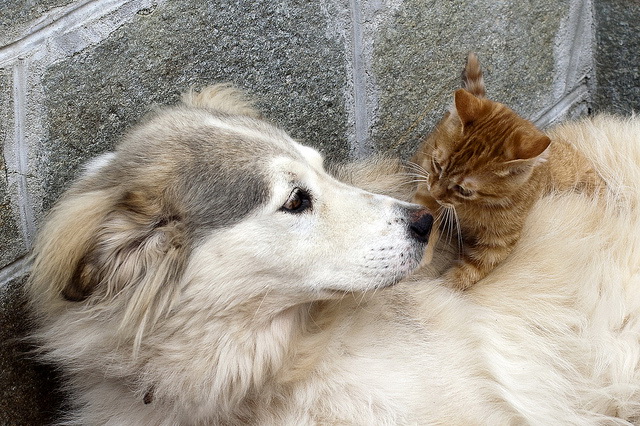
Years of research and observation have shown that people who have pets around on a regular basis live longer, are healthier, are less prone to anxiety and depression, have lower blood pressure, and sleep better at night. Pets can also help lower stress and speed recovery. Petting a dog or cat and talking to any animal can draw people out of isolation and help ease the sense of loneliness. Pets are magnificent listeners and give unconditional love, which often just what someone needs during the hard times in life. Animals are amazing companions for children, especially the ones with mental health disorders such as Autism Spectrum Disorders and ADHD.
Who uses this form of therapy?
Therapy pets are used in a wide variety of situations and places:
– Patients in hospitals who are recovering from surgery or are there for long term care
– Those who live in nursing homes, retirement communities, and hospice care patients
– Psychologically or emotionally troubled adults and children
– Adults and children who are suffering from physical disabilities or are in physical therapy
– Prison inmates or those who are under house arrest
– Disaster victims or those who have suffered abuse of any sort
There are many different types of animals that can be used in pet assisted therapy sessions. There are certain characteristics that therapy animals need and each animal type can help patients in different ways. Here are some of the most common animals used in therapy sessions.
Dogs:
These are the most common therapy pet used in the United States because they are easy to train and temperaments are easy to see and select. It become mainstream in mid 80s after Dr. Faith Fitzgerald published results of his study “The Therapeutic Value of Pets” in the Western Journal of Medicine.
Dogs are easy to bring into most places where therapy sessions might need to take place- hospitals, nursing homes, schools, and so forth.
They provide unconditional love and are very patient with older and younger people who may need some company during therapy sessions.
Dogs can be used in a passive therapy approach through petting, brushing, and talking, or in a more active role through walking, playing, and socializing.
Many people have good memories of dogs they had growing up so they are a safe and calming tool to use to get people to follow prescribed therapy treatments.
Cats:
Cats are not as common as dogs but they can be useful in pet assisted therapy.
They help teach boundaries and the importance of cause and effect and interrelationships.
Cats can be very helpful in comforting patients with emotional disorders or those who suffer from anxiety or depression.
They are not as intimidating as dogs and are good for patients who are very timid or fearful.
Many people find a purring cat to be very comforting and the act of petting a cat that is happily purring can help relax and soothe patients.
Horses:
Horse are very popular in therapy sessions that focus on movement and motor skills. Horse Therapy (or Equine Therapy) is very popular in rural areas in the United States and Canada.
Horses can be used for both physical and psychological/emotional therapy.
Children with walking, balance, spinal, and movement issues can benefit from riding horse because of the swaying motion one experiences while riding.
Horses can also help teach cause and effect and can be used to teach patients how their actions and behaviors impact others.
Rabbits:
Small animals like rabbits have been used to some success in animal assisted therapy sessions in the past.
Their small size makes them easy to bring to places larger animals could not go.
They are less intimidating for patients who may be fearful of dogs or cats.
Dolphins:
Water based therapy has long been used for a range of physical, mental, and emotional treatments, and dolphins play well into these existing therapies.
Dolphins respond and react to human interaction which is a plus.
They can be highly trained to interact in a number of ways and help patients with a number of tasks and therapy related activities.
Fish:
While they are not the first animal people think of for animal assisted therapy fish can be very helpful for relaxation and stress therapy.
Watching fish swim can be very relaxing and therapeutic.
This is why so many dentist, doctors’ and psychologists offices, and nursing homes have a fish tank on site.
Image: flickr.com/photos/egidiomaurizio/7157023684
Related pages:
– Cat Health
– Dog Health







